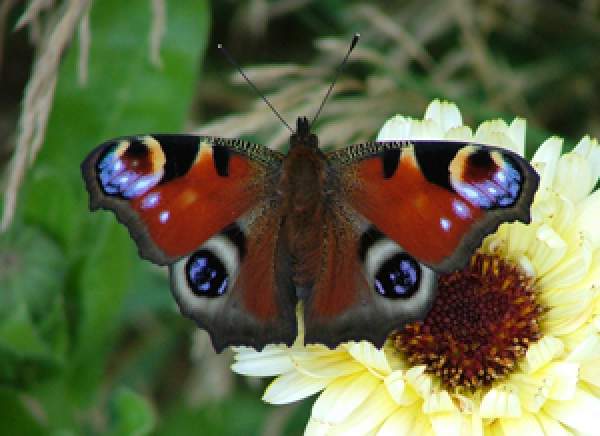Peacock
Inachis io

The spectacular pattern of eyespots makes the Peacock one of the most recognisable butterflies. Both sexes are similar in appearance, the bright upperparts contrasting with the mottled brown underparts that provide camouflage when the wings are closed. Although the caterpillars resemble those of Small Tortoiseshell, they are slightly larger in size, velvety black in colour and covered with minute white spots.
Individuals that emerge from the main summer generation need to feed up in preparation for hibernation and remain quite mobile until they find a suitable place in which to hibernate. Once they find such a place, they tend to use it as a roost site overnight, venturing out locally to feed during the day. Most individuals begin hibernation during September. This familiar species has shown a significant long-term increase in numbers at sites monitored through the Butterfly Monitoring Scheme.
Peacock butterflies are nomadic in nature and display a tendency to fly north in spring and south in late summer. These movements are not sufficiently well-defined to be regarded as being truly migratory in nature and Peacocks have only rarely been documented to make a sea crossing. Overwintered individuals feed during the morning and the males set up territories from about 1pm. They then show a dogged persistence in pursuit of any female that enters their territory. Females that have already been mated will go to significant lengths (including hiding) to avoid such ardent males and even unmated females may lead a pursuit that can last for several hours.
The main larval foodplant is common nettle and the young caterpillars, like those of Small Tortoiseshell, spin untidy webs over the leaves.






Share this page